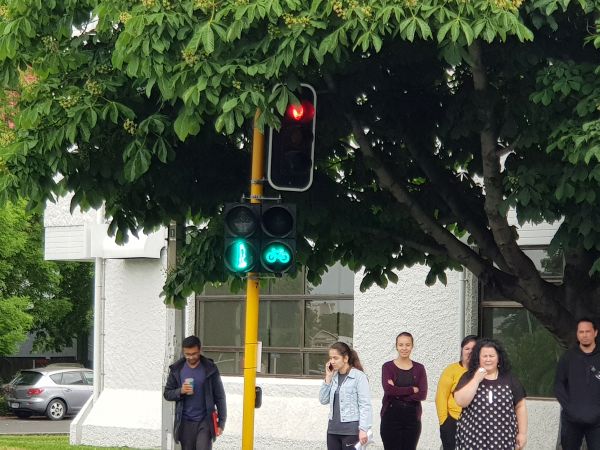Dunedin SH1 Barnes Dance Trials
Objective
Client
Location
Deliverable
Timeframe
Project Status
Background
The NZ Transport Agency commissioned ViaStrada to formally trial two "Barnes Dance" shared pedestrian/cycle crossings along SH1 in Dunedin, including preparation of trial application documents and design as well as analysis of the observational and perception surveys.
The two trial sites were SH1 northbound (Great King St / Albany St) and SH1 southbound (Cumberland St / Albany St). Two-aspect (red/green) signals were installed that provided both pedestrian and bicycle movements to operate concurrently at these intersections, including diagonal crossings. A comparison site (Hanover St / Castle St) was chosen to be able to compare the behaviours of road users at a regular intersection with the behaviour at the two combined "Barnes Dance" intersections.
A video survey of the two trial sites and one comparison site was undertaken to analyse compliance and behaviour of cyclists, pedestrians and WRD (Wheeled recreational device) users. The research focused on conflicts and cooperation between different road users during the Barnes Dance phases.
In addition, a perception survey was distributed online to find out what the general knowledge of signalised intersection road rules was and how different road users would behave in certain proposed situations at the two trial sites.
After two rounds of trials, the final report was submitted to the NZTA Traffic Control Devices (TCD) Steering Group. The trials did not give any reason to suggest that two-aspect signals shouldn't be adopted in the TCD Rule, but more sites may be needed to recommend them generally for Barnes Dance applications.





